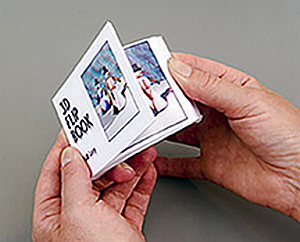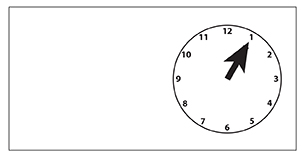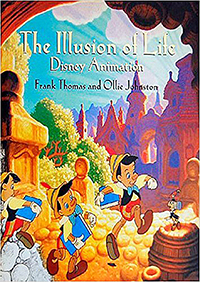|
How to Make Flip-Books
|
|
Flipbooks contain sequential images of something in action so that when they are held with one hand and the pages are flipped with the other, we perceive the feeling of motion. The principle is almost the same as the principle of cinema in which still images are presented in fast sequence to the eyes to create the feeling of motion. To make a successful flip book we need about 3 dozen pages bound as a book so that when flipped, sufficient time is given to the eyes to perceive motion. Here is a link to a page on this website where you can view animated examples of flipbooks which I have created a few years ago: http://www.gravitram.com/flip_books.htmThere are different methods to make a flip book: 1. By drawing sequential images directly on the pages of a blank book (or one can create the drawings separately and print them on loose pages and then bind the pages together.) 2. By using a small model of something and photograph it several times in different positions. This is called “stop motion animation” 3. By extracting certain frames from a video and use the frames to create a flip book. Using a computer can make all this much easier, but it is possible to make a flip book without one. The classic cartoons in the movies and Sunday morning TV, used this technique of stop motion animation to create the classic creations at Disney Hollywood Studios. Below is a basic demonstration of how to create the artwork for a flip-book. We draw 12 clock faces and change the position of the hour hand to show the hours in sequence. We then print one face per page starting with the face showing 12 o'clock, then 1 o'clock, etc., until we have 12 pages. We repeat this sequence so we have 36 pages. That's all, now we have created a flip-book.
Here is the animated sequence and below is a picture of the physical flip-book.
It is possible to create the images also by photographing the face of a real old-fashioned alarm clock with its minute hand removed, just is in the photo below. When photographing an object repeated times, one has to secure the object that we photograph (the clock) firmly on the table and place also the camera firmly at the correct distance from the clock. In this way the only thing that will be different in each photo will be the hour hand and nothing else.
Below is a sequentially created series of photographs of a small, 12 inch tall model of a cat-woman doll placed on a round base that could be rotated 10° for each shot and photographed 36 times.
Here is a link to the flip book of the cat-woman: How to make the flip book? A flip book should be long and narrow so that the left portion can be held with the left hand firmly and flipped with the right hand thumb as in the picture and drawing below.
To reiterate, the images should be on the far right side of the flip book so that when we hold the booklet with the left hand we won’t obstruct the view of the images. The images should all be printed at exactly the same position on each page sothat when the pages are flipped, the only thing that moves is the object itself and not the frame. Binding the flip book can be done in the Perfect Binding method or the left edge can be stapled with a power stapler and then bound with a continuous cover. The pages should be made slightly larger and the book should trimmed after binding. Trimming the book is done for aesthetical reasons except for the right edge which must be trimmed smoothly so that flipping can be achieved smoothly without skipping pages. The weight of the leaves should be at least 60 lbs for the same reason just mentioned above. A much “fancier” version of a flip book can be done if the images are printed on high quality photo paper. Here are a few more examples: Balls, Spinning Quarter, Articulated Hand, Animation, Running Clock, Accident, Waltz, Face
Subjects for flipbooks are literally limited only by one’s imagination. Anything that moves can be made into a flip book, including frames from an existing movie or video or by using the stop motion photography technique or by direct drawing of cartoons. If you are interested in the history of the Walt Disney studio, buy this lavish book called “The Illusion of Life”.
|






